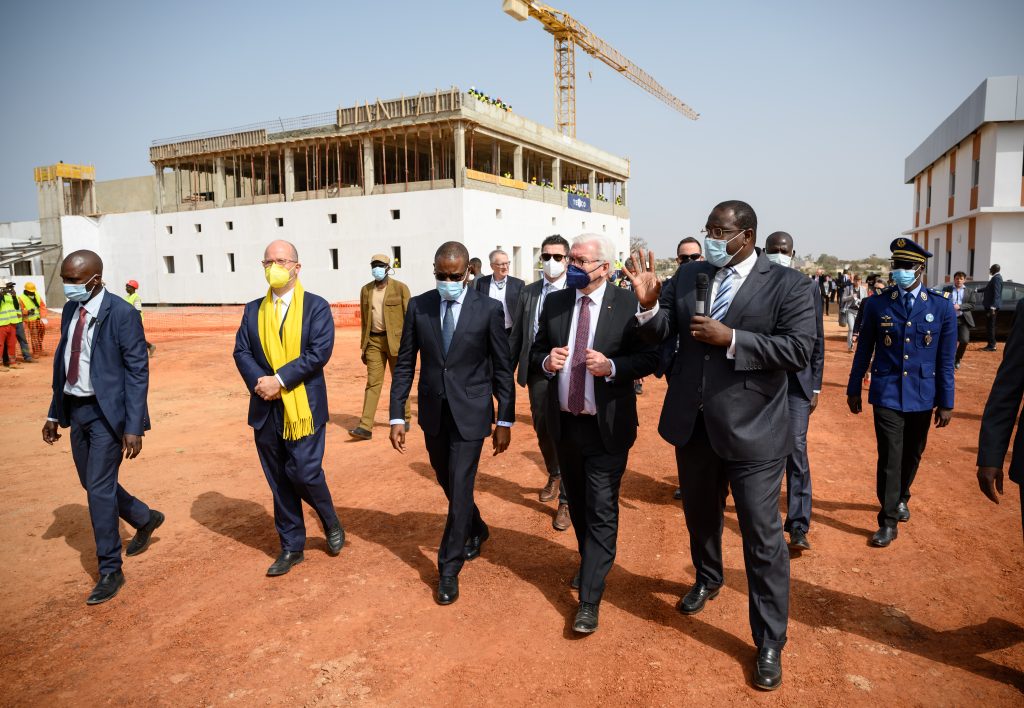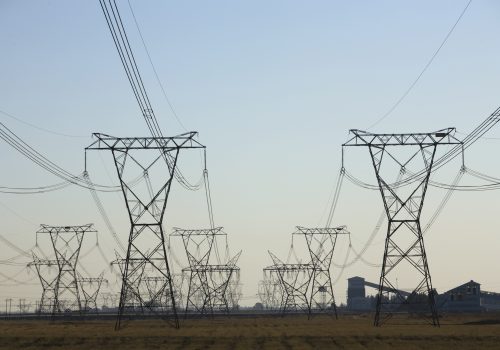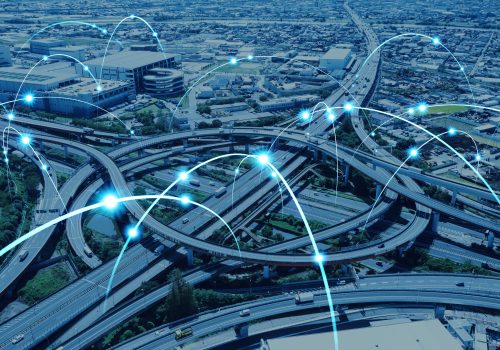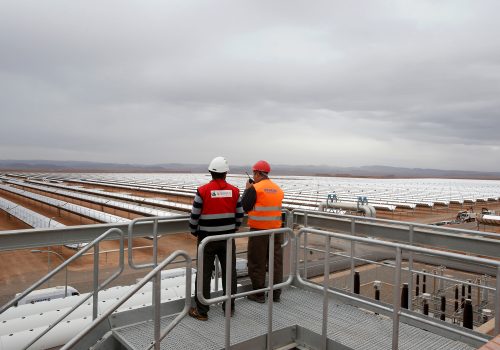This summer, Group of Seven (G7) leaders followed on their 2021 promise to develop the new six hundred billion dollar Partnership for Global Infrastructure and Investment (PGII)—described as “a values-driven, high-impact, and transparent infrastructure partnership to meet the enormous infrastructure needs of low- and middle-income countries.” The PGII, plus the two hundred billion dollars pledged by US President Joe Biden over the next five years to support it, represents the most integrated and demonstrable alternative by the United States and its allies and partners to China’s Belt and Road Initiative to date.
But where do we go from here?
The White House has announced a series of early PGII wins to emphasize that the initiative is already more than a press release, including a wide and eclectic group of projects addressing infrastructure, energy, health care, digital infrastructure, food security, climate change, urban development, and more. They range from solar power in Angola to vaccine manufacturing in Senegal to a modular nuclear reactor in Romania to submarine cables extending from Singapore to France. But skeptics will question whether this is simply the latest in a long list of infrastructure-related efforts announced—but not followed through with—in recent years.
With billions of dollars already nominally tied to previous announcements about Build Back Better World, the Indo-Pacific Economic Framework, Global Gateway, the Blue Dot Network, and more, it’s only fair to ask what makes PGII different or more impactful. It presents an opportunity to address the procedural and structural obstacles that have hampered multilateral cooperation in the past.
The first key aspect of the partnership is its emphasis on mobilizing the private sector—so the true test of its success will not be the amount of public funds put into it, but how successful they are in attracting private investment. The second key aspect is that it is explicitly a “partnership:” PGII is not meant just to be a set of complementary but separate national efforts; it aspires at its core to be an integrated effort.
So how can participating countries execute a coordinated and synchronized series of actions that are greater than the sum of their individual parts? Here are five key recommendations:
Appoint a lead agency to represent each country. For the partnership to bear fruit, it requires sustained and challenging coordination across each G7 country’s suite of agencies that are engaged in infrastructure investments. In the United States alone, for example this suite includes the International Development Finance Corporation (DFC); the US Agency for International Development (USAID); and the departments of State, Commerce, and Transportation, among others. Appointing a clear lead agency to coordinate national efforts would better ensure institutional expertise and commitment over time, as well as improve coordination across the G7.
Establish clear partnership goals and offer guidance to achieve them. Is the goal to pool funds and invest jointly in projects, or to share information and coordinate discreet investments in a given project, sector, or across sectors? Or is it to develop a common communication platform to convey aggregated G7 infrastructure investments in a given nation or sector? Or a combination of the above? Whatever the ambitions for the partnership, they need to be clearly stated and the partnership goals commensurately assessed and communicated. The optimal level of coordination may require G7 nations able to fund each other’s projects even if their national companies are not involved. For example, the DFC favors but does not require a US nexus in infrastructure investment (e.g., the Ethiopian telecom project with Vodafone and Sumitomo). If all G7 nations could arrive at a similar approach, it will allow for optimal partnership impact. They could also develop additional partnership modalities to invest in both debt and equity, and in local currencies.
The execution of PGII calls for nuanced balance across three major drivers of demand. Meeting PGII’s purported goals of addressing global infrastructure demand calls for clear articulation and quantification of relevant demand signals. Three major, but not exclusive, demand drivers include: host nation demand for high-quality infrastructure to fuel economic growth; private sector demand, particularly from institutional investors, for quality infrastructure investments with stable returns; and geopolitical considerations for infrastructure investments for influence in highly contested strategic regions such as the South Pacific islands. PGII may be well served by developing a triangulated demand framework to deploy scarce resources to optimal impact.
Position PGII at the center of the constellation of bilateral and multilateral international development efforts. Emerging nations are inundated by a steady stream of infrastructure facilitating initiatives championed by G7 nations individually and collectively, either directly or through multilateral development banks in which they are the largest shareholders. It may be of strategic value to explicitly position PGII at the center of the full suite of multifaceted G7 resources affecting global infrastructure demand—to enshrine PGII as a catalyst for global impact on high-quality infrastructure. The PGII must be wholly incorporated and championed by G7 development agencies and G7-supported multinational development banks and financial institutions in their loans and investments, ensuring that the cumulative impact of the PGII reaches beyond its initial six hundred billion dollar allocation. This would also create an opportunity to engage the Organization for Economic Co-operation and Development, build on lessons from the Blue Dot Network and similar past high-quality infrastructure certification efforts, and integrate the PGII into a global network that extends beyond the G7.
Implement a robust global communication strategy. For the PGII to be credible in its global impact and recognition, it needs a sustained professional communication and marketing strategy that conveys the sum total (and more) of the aforementioned recommendations. It will have limited recognition and shelf life if it remains a G7 talking point. The cumulative impact of G7 nations’ full suite of infrastructure investments and supporting initiatives if properly collated and communicated would rival and exceed BRI outlays. This was true before the announcement of PGII, and the inability to tell that story has been a lamentable shortcoming. The G7 cannot afford to persist with this shortcoming. It is a strategic imperative to execute a well-resourced PGII communication strategy that offers an accurate cumulative impact on global infrastructure of the collective efforts of G7 nations individually, collectively, and along with their supported multinational development banks and like-minded allies.
Kaush Arha is a nonresident senior fellow in the Atlantic Council’s Global China Hub.
Further reading
Fri, Nov 4, 2022
To meet energy security and climate goals, Africa needs investment in infrastructure
EnergySource By William Tobin, Maia Sparkman
To this point, Western engagement in Africa has primarily taken the form of aid. For the continent to achieve widespread electrification and form the foundation for robust economic growth, that engagement will need to morph into investment and partnership.
Mon, Oct 31, 2022
The global infrastructure financing gap: Where sovereign wealth funds and pension funds can play a role
Econographics By
Having more than $65 trillion in assets, institutional investors such as SWFs and pension funds are uniquely positioned to bridge low-income economies’ infrastructure financing gap in the coming decades. The Bretton Woods Institutions (BWI) can encourage investment in developing countries’ infrastructure through providing various guarantee and insurance mechanisms, thereby reducing risk for private investors.
Fri, Apr 22, 2022
How the G7 can fund its clean green plan
New Atlanticist By
To bring its green vision to life, the G7 needs to nail down where the money will come from.
Image: German President Frank-Walter Steinmeier visits the site of the future vaccine production facility of Biontech and the Institut Pasteur de Dakar in Diamniadio in the Dakar region and is shown around the construction site together with Amadou Hott (M), Minister of Economy from Sengal, by Amadou Sall (r), Head of the Institut Pasteur de Dakar, and Holm Kelle (2nd from left), Vice President for International Partnerships at Biontech. The construction of the factory for vaccines against Covid-19 and other endemic diseases is supported by Germany and the EU, among others. The project was among those announced by the White House as a "flagship project" of PGII. (Photo by Bernd von Jutrczenka, DPA/Picture Alliance via Reuters)



